Like them or loathe them, every gent will need to don a suit at some point in their life. And whether it be for a wedding, work or a swanky dinner, it pays to know the basics. When it comes to suits, they really do come in all shapes and sizes; some good and some bad. Indeed, as the great Peter Johnson says, ‘There are so many ways you can approach wearing a suit. The styling options are endless’. Here, we simplify the matter, showing you how to ensure you present as a boss even if this is your first foray into tailoring.
In This Story…
How To Wear Single Breasted Suits
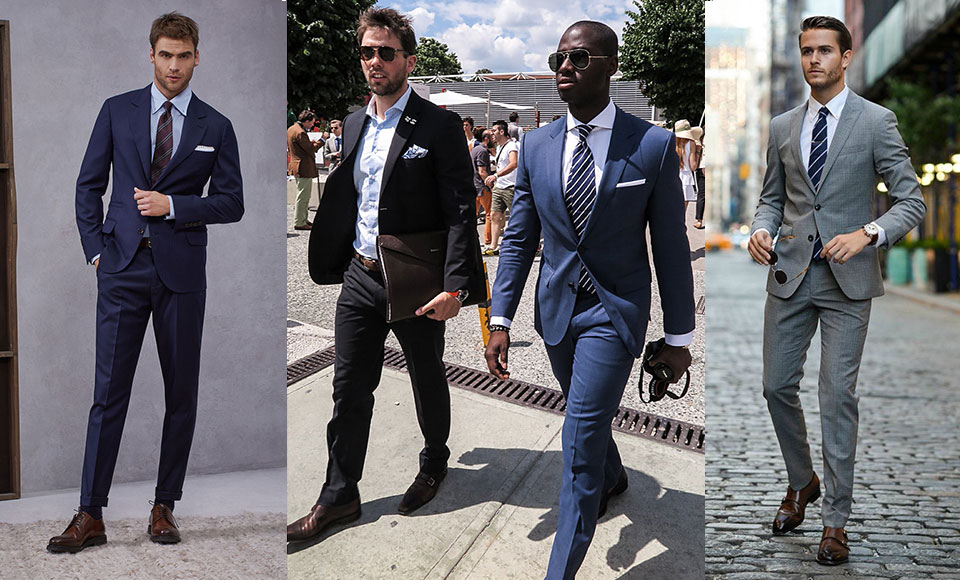
This is your stock standard starter suit. Perfect for work, cocktails and special events alike, a single breasted two piece is set to go the distance and the perfect foundation for your suiting wardrobe. If this is your first piece, look at navy or charcoal options. Less severe than black, these colours work for day and night time alike.
When it comes to tailoring, nothing beats a classic slim fit. A good jacket will cover your glutes, hitting the top of your thighs. On a similar note, the sleeve length should sit on the knobbly part of your wrist, allowing a centimetre or so of cuff to show. These are small but important details that can make even an entry level suit look expensive.
Looking at fabrication, try for a natural fibre as this will breathe and last longer than synthetics. The likes of M.J. Bale are a good place to start your search, with their White Label option in an Indigo pin dot fabric a classic for any wardrobe.
How To Wear Double Breasted Suits
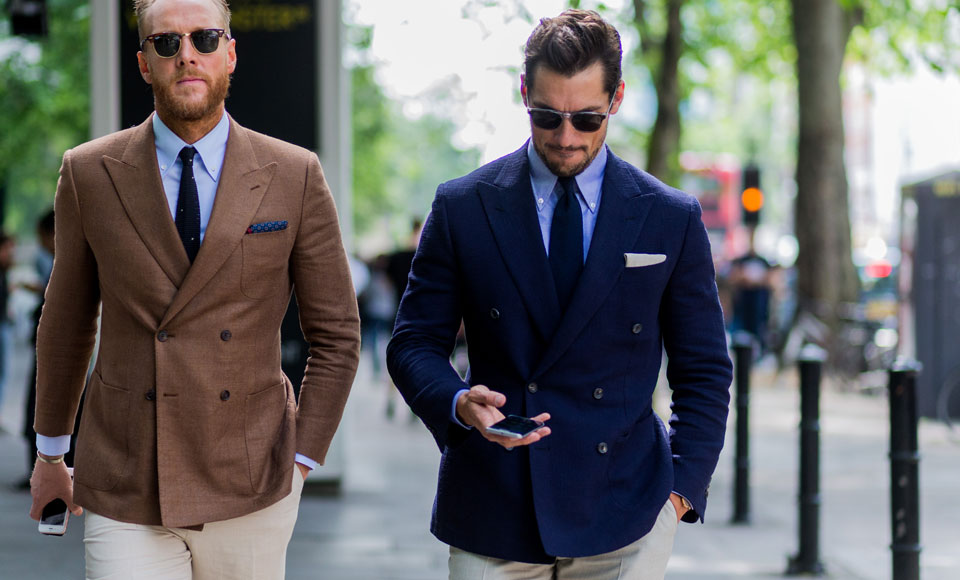
Unlike the double breasters of yore (shoulder pads as wide as a carrier jet), today’s style is decidedly slimmer and more flattering. This being said, they’re not for the faint of heart – a double breasted suit is a statement and needs some deft handling to stop you from looking like too much of a fat cat.
For starters, we’d recommend steering away from bold pin stripes and checks. These add another layer to an already flamboyant style. Instead, look for interesting weaves and fabrics like flannel that can soften the overall impact. Great for the cooler months due to the double up of fabric over your core, seek out greys and charcoals and pair them with similarly wintery hued ties. Bold diagonal stripes in neutral colours look sensational over a white sateen shirt. Top the whole thing off with a pair of polished brogues.
How To Wear Linen Suits
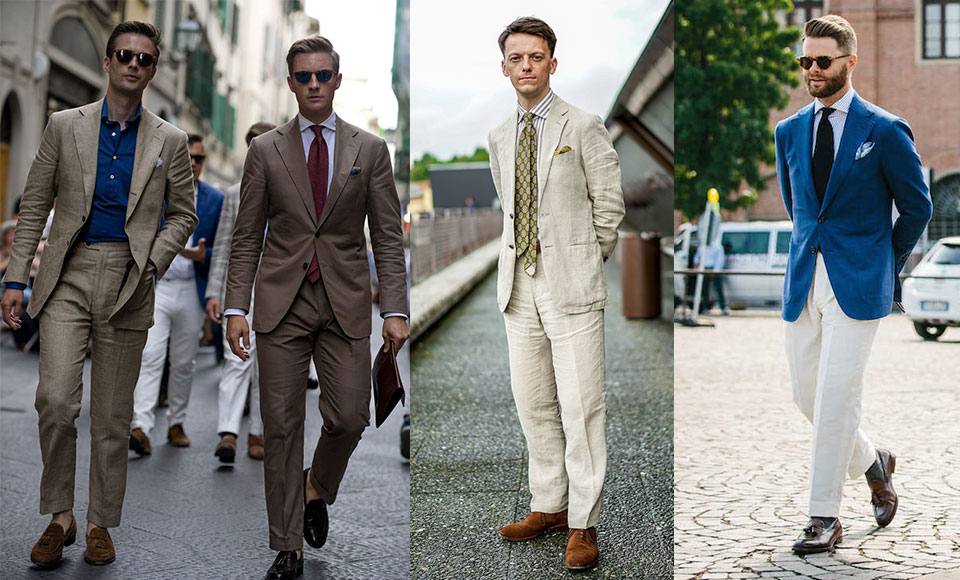
Linen suits have enjoyed a resurgence of late – no less for their adaptability in a warm climate but also for their versatility. Either shrugged on sans tie with a plain poplin shirt for a summer wedding or styled as a three piece with a woven silk tie, this is a suit that truly works for any occasion.
When it comes to picking one out, look for styles that can work as either a full suit or as separates. The jacket of a stone coloured linen suit looks sensational with a blue chambray shirt, a pair of jeans and loafers. On the same token, it can be dressed up as a full suit with a knitted tie and a pair of suede monk straps.
In terms of fabrication, don’t be afraid to dabble with blended fabrics. Linen suits that are blended with either silk or cotton often crease less than their pure counterparts and will also retain their structure better.
How To Wear Slim Fit Suits

For many chaps, there’s a temptation to push tailoring to the nth degree in suiting. It rarely ends well. If anything, a skin tight suit will look too small and wear out in a few months. Instead, the fit of a suit – even a slim one – should be seen to skim the contours of your body.
If you do have a predilection for the skinny British mod style, some high street labels have a great selection that can work well with the aid of a skilled tailor. Investigate the likes of Reiss and Sandro for good quality iterations, aiming for options in inky navy and black. These are classics and add an element of sartorial nous to your overall look.
Alternatively (and if the paycheck allows), Thom Browne offers incredibly chic slim suits with signature shrunken tailoring.
How To Wear Unstructured Suits
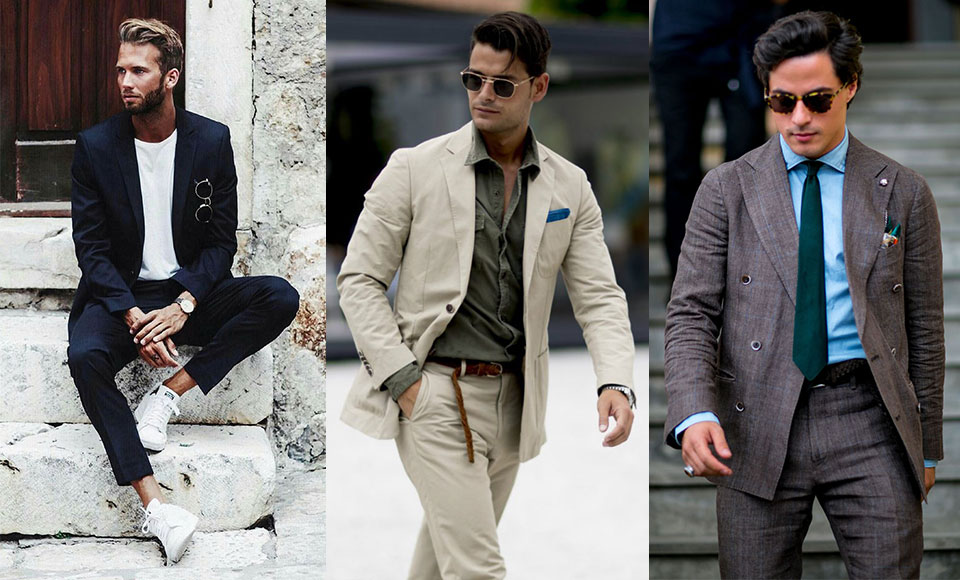
As dress codes become increasingly relaxed, so too do the rules of suiting. Whereas once the notion of a suit without a canvas (the internal fabric that gives it structure) would be met with guffaws, today it’s rapidly becoming common practice.
Popular because of their more casual look and feel, an unstructured suit is marked by soft Neaopolitan style tailoring. This is most obvious around the shoulder which is unpadded and should slope elegantly from the collar.
This style of suit can be equally striking in either a block colour or pattern. If you are looking for bolder options, checks or pale neutrals are a great way to bolster your wardrobe. Pair these with either a shirt or a fine knit polo shirt to truly embody the spirit of sprezzatura.
How To Wear Relaxed Suits
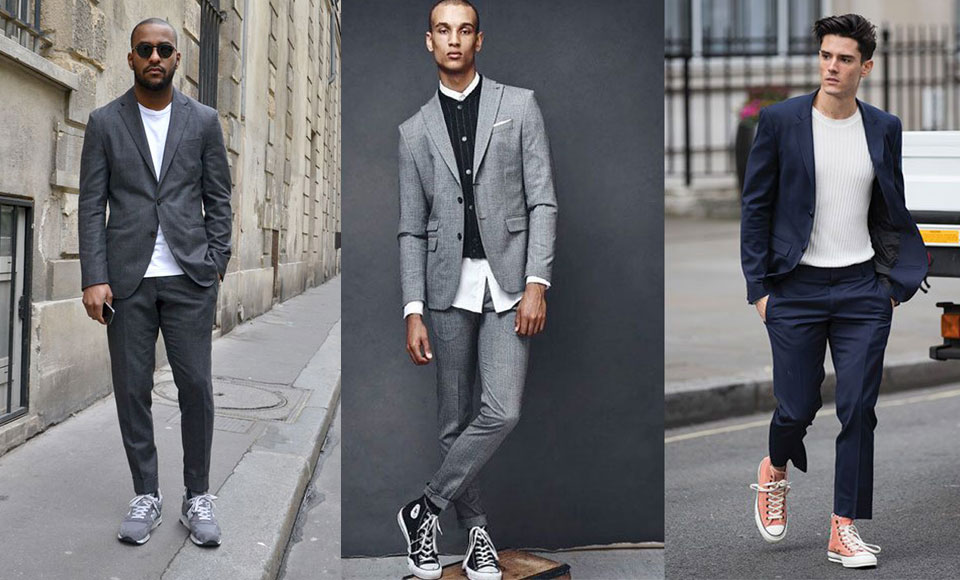
Worn with shirts and t-shirts alike, the relaxed suit is, in many ways, at the vanguard of men’s suiting. With labels as varied as G-Star and Brunello Cucinelli sending models down the runway in jackets and trousers that combine the artistry of tailoring with the edge of streetwear.
If tackling this relatively avant-garde look yourself, there are a number of points worth noting. First and foremost, an unstructured suit is no excuse for poor tailoring. Make sure that the length of the jacket is in proportion to your torso and that it looks relaxed – not baggy. Secondly, use an unstructured suit to play with scale. This is an opportunity to experiment with wider leg trousers and different hem lengths. Finally, don’t be afraid to pair it all back with a pair of slick sneakers and a plain tee. There’s something about a white top with an relaxed khaki suit that reeks of understated elegance and cool.
Read Next